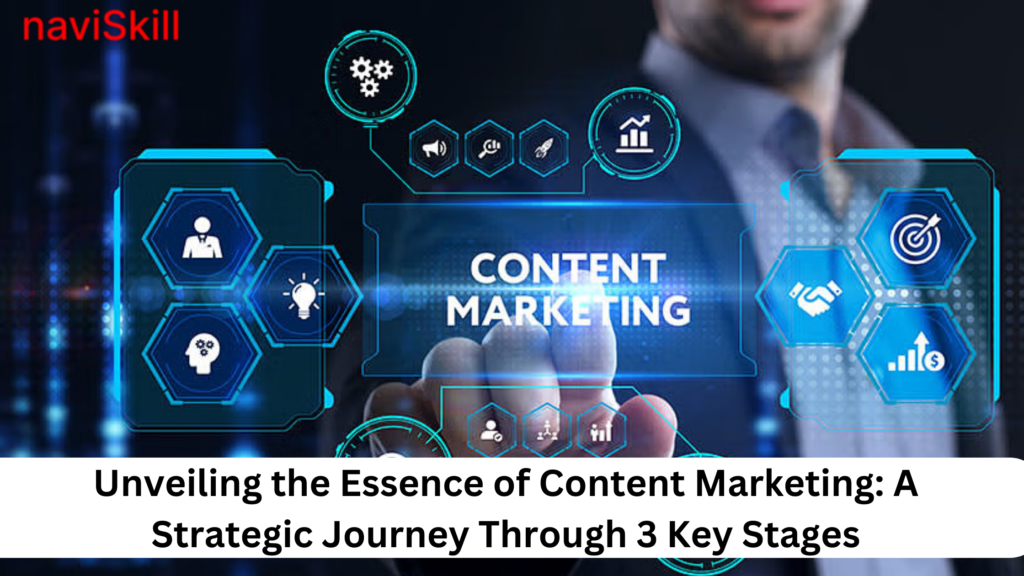Introduction:
In today’s digital age, content marketing has emerged as an indispensable strategy for businesses striving to connect with their audience effectively. However, navigating the complexities of content marketing requires a structured approach that encompasses three pivotal stages: Attack, Engage, and Convert. In this in-depth guide, we will delve into each stage, offering innovative strategies and insights to empower you in mastering content marketing and driving tangible results for your business.
Stage 1: Captivate – Crafting Impactful Content
The Captivate stage revolves around the creation of compelling, high-quality content that captivates your audience’s attention and establishes your brand’s authority. To excel in this phase, consider implementing the following strategies:
Understanding Your Audience:
Before embarking on content creation, delve deep into understanding your target audience’s demographics, preferences, and pain points. Employ various tools such as surveys, social media analytics, and customer feedback to gather invaluable insights that will inform your content strategy.
Crafting a Unique Value Proposition:
In a competitive digital landscape, it’s crucial to define and communicate your brand’s unique value proposition effectively. Highlight what sets your brand apart from the competition and resonates with your audience, whether it’s exceptional quality, innovative solutions, or unparalleled customer service.
Creating Compelling Content:
With a thorough understanding of your audience and value proposition, focus on crafting content that delivers value and addresses their needs. Experiment with diverse formats such as blog posts, videos, infographics, or podcasts to engage your audience effectively across different channels.
Optimizing for Search Engines:
Ensure your content is optimized for search engines to enhance its visibility and reach. Conduct comprehensive keyword research to identify relevant terms and seamlessly incorporate them into your content. Pay close attention to on-page SEO elements like meta titles, descriptions, and headers to improve your content’s search engine ranking.
Stage 2: Engage – Building Meaningful Connections
The Engage stage is all about fostering meaningful connections with your audience and nurturing relationships. Here are some effective strategies to excel in this phase:
Encouraging Two-Way Communication:
Promote active engagement by encouraging dialogue and interaction with your audience. Respond promptly to comments, messages, and inquiries across various platforms, and create opportunities for user-generated content to foster a sense of community.
Delivering Value-Added Content:
In addition to creating original content, curate and share valuable content from reputable sources that align with your audience’s interests. By offering a diverse range of content that educates, entertains, or inspires, you position your brand as a valuable resource and build trust with your audience.
Personalizing the Experience:
Tailor your content and messaging to cater to the unique preferences and behaviors of different audience segments. Leverage data analytics and segmentation strategies to deliver personalized content recommendations, product suggestions, or promotional offers that resonate with individual users.
Utilizing Interactive Content:
Interactive content formats such as quizzes, polls, or interactive infographics can enhance engagement by encouraging active participation. Leverage these interactive elements to create immersive experiences that captivate your audience’s attention and provide valuable insights into their preferences and interests.
Stage 3: Convert – Turning Engagement Into Action
The Convert stage focuses on converting engaged audience members into loyal customers or subscribers. Here are some strategies to drive conversions effectively:
Implementing Clear Calls-to-Action (CTAs):
Guide your audience towards desired actions by incorporating clear and compelling calls-to-action (CTAs) in your content. Whether it’s prompting users to sign up for a newsletter, download a resource, or make a purchase, ensure that your CTAs are prominently displayed and easy to follow.
Offering Incentives and Promotions:
Encourage conversions by providing incentives or promotions that motivate users to take action. Whether it’s offering discounts, free trials, or exclusive offers, create a sense of urgency and scarcity to prompt immediate action and capitalize on the heightened interest during the holiday period.
Streamlining the Conversion Process:
Optimize the conversion process by minimizing friction and simplifying the user journey. Remove any unnecessary barriers, streamline forms, and offer multiple payment options to ensure a seamless and hassle-free experience for users.
Tracking and Analyzing Performance:
Monitor key performance metrics such as conversion rate, click-through rate, and return on investment to assess the effectiveness of your content marketing efforts. Utilize analytics tools to gain insights into user behavior, identify areas for improvement, and refine your content strategy for optimal results.
Conclusion:
Mastering content marketing requires a strategic approach that encompasses three essential stages: Captivate, Engage, and Convert. By creating compelling content, fostering meaningful connections with your audience, and driving conversions effectively, you can unlock the full potential of content marketing and achieve sustainable growth for your business. Implement the strategies outlined in this guide to embark on a transformative journey through the dynamic landscape of content marketing and emerge as a frontrunner in your industry.


